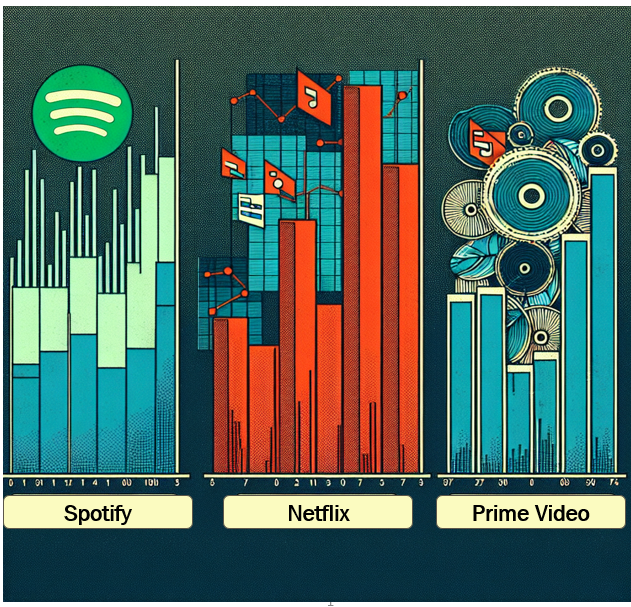Cannes Contenders: Creativity That Commands Attention - 21 pieces of work
The Cannes Lions International Festival of Creativity is the pinnacle of recognition in the advertising world, celebrating groundbreaking campaigns that blend innovation, storytelling, and cultural impact. Each year, the festival showcases work that pushes boundaries, resonates with audiences, and redefines the art of communication. In this exploration, I highlight 21 campaigns poised to shine at Cannes, each demonstrating bold creativity, strategic brilliance, and the power to inspire change. From emotionally charged narratives to disruptive digital executions, these campaigns represent the best of what advertising can achieve in 2025.
1.AXA’s “Three Words” Campaign Sets a New Creative Standard in Insurance

- What exactly happened:
AXA’s “Three Words” campaign, developed by Publicis Conseil, was shortlisted for both the Titanium and Innovation Lions at Cannes. It uses a minimalist, emotionally resonant three-word message to tackle deeper societal or emotional themes, demonstrating a bold evolution in how insurance brands communicate. - Why it’s relevant:
The campaign proves that even traditionally low-engagement categories like insurance can emotionally connect with audiences. By simplifying storytelling while retaining depth, it signals a growing demand for human-centric, purpose-driven narratives that move people and build stronger brand affinity through empathy and relevance. - What it signals for the future:
Expect more brands to embrace radical simplicity combined with emotional weight. “Three Words” sets a trend for creative minimalism that speaks volumes—pushing marketers to blend innovation with raw, human storytelling to remain meaningful and memorable in a cluttered media landscape.
2.EDF’s “The Flame That...” Ignites New Energy for Purpose-Driven Brand Storytelling

- What exactly happened:
EDF’s campaign, “The Flame That...”, was shortlisted for the Titanium Lions, spotlighting the French energy giant’s shift from utility provider to emotive storyteller. The campaign likely uses a metaphorical flame to represent energy and transformation, emphasizing EDF’s leadership in sustainable energy and cultural pride through bold, human-centered storytelling. - Why it’s relevant:
This work redefines how energy brands can emotionally engage consumers. EDF elevates its role from infrastructure to inspiration, using narrative and metaphor to communicate purpose. It underscores a growing creative trend—using brand platforms to drive sustainability messaging while building deeper emotional connections, even in traditionally utilitarian sectors. - What it signals for the future:
EDF sets a precedent for turning functional industries into storytelling powerhouses. Expect more energy and utility brands to adopt emotionally resonant, metaphor-driven campaigns that spotlight environmental purpose. As consumers seek values-led messaging, campaigns like this could drive the next wave of green brand communication and creative reinvention.
3.L’Oréal’s “The Final Copy” Reclaims Brand Legacy with Emotional Precision

- What exactly happened:
L’Oréal Paris launched “The Final Copy of Ilon Specht,” a documentary-style campaign honoring the woman behind its legendary tagline, “Because I’m Worth It.” The film revisits Specht’s legacy and the empowering origins of the slogan, reframing it as a timeless feminist anthem. It earned a Titanium Lions shortlist spot. - Why it’s relevant:
This campaign shows how heritage can be leveraged for modern impact. By celebrating the roots of a cultural catchphrase through long-form storytelling, L’Oréal reinvigorates brand meaning while aligning with contemporary values. It challenges beauty brands to go deeper, turning slogans into movements through authenticity and emotional resonance. - What it signals for the future:
Expect more legacy brands to turn to origin storytelling as a way to build cultural credibility. Documenting real voices behind iconic campaigns offers brands an authentic pathway to purpose, emotional depth, and longevity. This signals a shift toward narrative permanence over seasonal storytelling in brand strategy.
4.Orange’s “Safer Phone” Campaign—Innovating to Save Lives on the Road

- What exactly happened:
Orange, the French telecom giant, launched the “Safer Phone” campaign to address distracted driving caused by smartphone use. The campaign promotes a new technological solution—likely an app or feature that blocks notifications while driving—to reduce accidents. This initiative blends innovation with social responsibility, earning a shortlist in the Titanium Lions category for its creative and impactful approach. - Why it’s relevant to the marketing community:
The campaign exemplifies how telecom brands can evolve beyond connectivity to become agents of social good. It highlights the power of purpose-driven innovation, demonstrating that integrating technology with meaningful social issues can deepen consumer engagement, build trust, and elevate brand purpose in a competitive landscape. - How it bodes for the future:
“Safer Phone” signals a shift toward tech-enabled, socially conscious marketing solutions. As consumers increasingly expect brands to contribute positively to society, campaigns that combine innovation with impactful causes will shape future marketing strategies, setting new standards for responsibility and relevance in telecom and beyond.
5.Coke Studio Bharat’s “Tutari Girl” Amplifies Tradition and Empowerment

- What exactly happened:
Coke Studio Bharat’s “Tutari Girl” campaign spotlights a young female artist playing the traditional tutari instrument, blending regional music heritage with contemporary sounds. It celebrates cultural diversity and gender empowerment, creating a unique narrative that gained strong traction across India’s music and advertising scenes. - Why it’s relevant to marketing:
The campaign exemplifies purpose-driven storytelling by merging authenticity with modern relevance. It challenges stereotypes and connects deeply with diverse audiences, showcasing how brands can build emotional bonds through cultural celebration and inclusivity, a key driver for engagement in today’s fragmented markets. - How it bodes for the future:
“Tutari Girl” signals a growing trend towards elevating underrepresented voices and regional culture in brand storytelling. Its success may inspire more campaigns that blend tradition with innovation, driving meaningful consumer connections and reinforcing the value of local narratives in global brand strategies.
6.Coke Studio Bharat’s “Sing to Remember”: A Timeless Musical Ode to Memory and Heritage

- What exactly happened:
“Sing to Remember” by Coke Studio Bharat, created by VML India, won two Cannes Lions in 2024 for its powerful storytelling around memory and cultural preservation through music. The campaign uses emotional narratives to bridge generations, celebrating India’s rich musical heritage. It is now resubmitted for Cannes 2025 to showcase sustained impact and creative growth. - Why it’s relevant to marketing:
This campaign highlights how brands can harness emotional storytelling rooted in cultural heritage to build authentic, lasting connections with diverse audiences. By integrating nostalgia and music, it demonstrates effective brand positioning that transcends traditional advertising, inspiring marketers to create purpose-driven content that resonates deeply and drives engagement. - How it bodes for the future:
“Sing to Remember” exemplifies a shift towards campaigns that emphasize long-term cultural impact and legacy. Its ongoing recognition signals a growing trend where marketers focus on storytelling platforms that evolve over time, blending tradition with innovation to foster enduring consumer relationships and meaningful brand purpose.
7.TECNO’s #ToneProud Campaign: Tackling AI Skin Tone Bias with Technology and Inclusion

- What exactly happened:
TECNO, via McCann Worldgroup Singapore and China, launched #ToneProud in Nov 2024 to fight AI skin tone bias. The campaign built the world’s largest scientific skin tone database (268 tones) to power TECNO’s Universal Tone tech, enabling fair AI imaging and inviting global consumers to celebrate and contribute to skin tone diversity. - Why it’s relevant to marketing:
The campaign merges tech innovation with social purpose, addressing a critical bias issue in AI while engaging consumers globally through digital storytelling and crowdsourcing. It exemplifies how brands can drive inclusivity, cultural relevance, and authentic engagement, aligning perfectly with growing demand for purposeful, equity-driven marketing. - How it bodes for the future:
By creating an open-source skin tone database for AI, #ToneProud signals a new era of inclusive tech-driven creativity. It sets a benchmark for campaigns that combine scientific rigor with emotional storytelling, inspiring brands to leverage technology for systemic social change and sustained cultural impact on a global scale.
8.Flipkart Minutes’ “Q Jumpers” Campaign: Redefining Quick-Commerce with a Real-World Stunt at the iPhone 16 Launch

- What exactly happened:
During the September 2024 iPhone 16 launch in Mumbai, Flipkart Minutes (Flipkart’s quick-commerce arm) executed a bold stunt where they delivered an iPhone 16 in just seven minutes to a customer waiting in line outside Apple’s flagship store. A person wearing a Flipkart T-shirt with a QR code invited the customer to order via Flipkart Minutes, proving ultra-fast delivery in real-time, cutting through a cluttered market of “minutes delivery” claims by actually demonstrating it. - Why it’s relevant to marketing:
This campaign disrupts traditional advertising by transforming a cultural moment into a live brand experience. It leverages minimalist yet audacious creativity—using just a T-shirt and QR code—to create high impact with low media spend. It highlights how experiential marketing and cultural hijacking can effectively drive consumer engagement, trust, and buzz in competitive markets. - How it bodes for the future:
Flipkart Minutes’ stunt sets a new standard for purpose-driven activation in India’s quick-commerce space. It shows how brands can break through noise with authenticity and consumer participation, pointing to a future where live, shareable experiences will increasingly define brand success. The campaign also underscores the growing power of minimalistic, digitally integrated activations in driving both social media virality and direct consumer response.
9."Lucky Yatra: Revolutionizing Public Compliance Through Gamified Marketing"

- What happened?
FCB India created the "Lucky Yatra" campaign for Mumbai’s Central Railways, turning train ticket purchases into lottery entries with daily cash prizes. This initiative targets Mumbai’s 7.5 million daily commuters, addressing widespread ticketless travel by transforming compliance into a rewarding, culturally resonant experience. - Why it matters?
This campaign highlights a shift from traditional punitive enforcement to positive behavioral incentives, leveraging India’s strong lottery culture. It showcases how brands and public services can use gamification and culturally insightful storytelling to engage massive audiences and foster lasting behavior change, setting a new standard for consumer engagement. - Future impact:
"Lucky Yatra" exemplifies scalable, purpose-driven marketing that blends simplicity and innovation. It signals a growing trend of campaigns that not only promote brands but also solve societal issues, encouraging marketers to create meaningful, measurable impact through culturally aligned, gamified consumer experiences.
10.“So Many Dicks”: e.l.f. Beauty’s Bold Campaign Challenging Corporate Boardroom Diversity

- What happened?
In May 2024, e.l.f. Beauty partnered with OBERLAND to launch the provocative “So Many Dicks” campaign, highlighting the stark lack of diversity on U.S. corporate boards by revealing there are more men named Richard, Rick, or Dick than women from many underrepresented groups combined. The campaign used bold OOH ads in NYC’s Financial District, extensive data analysis of 36,957 board members, and an interactive digital platform to drive awareness and accountability. It also sponsored diverse candidates through NACD Accelerate™, with 10% securing board seats by June 2024. - Why it matters?
This campaign stands out for combining cheeky, memorable messaging with rigorous data, turning abstract diversity issues into tangible, relatable insights. It underscores the business value of diverse leadership—e.l.f.’s diverse board correlates with strong sales growth—and successfully engages a socially conscious, Gen Z audience. The initiative’s multi-channel execution, positive media sentiment, and purposeful partnerships make it a model for how brands can drive meaningful social impact while enhancing consumer engagement and brand equity. - How it bodes for the future:
“So Many Dicks” raises the bar for DEI marketing by proving that provocative creativity backed by data and actionable outcomes can create real change. Its success at Cannes Lions and measurable board appointments suggest growing industry momentum toward purpose-driven campaigns that combine awareness, accountability, and business performance. This approach will likely inspire more brands to embrace bold, socially relevant storytelling that moves beyond symbolism to measurable impact.
11.Heineken’s “Pub Succession” Campaign Champions Irish Pub Heritage with Global Engagement

- What happened?
Heineken launched an emotional global recruitment campaign to find a successor named McLoughlin for a 155-year-old family-run pub on Achill Island, Ireland. The initiative combined storytelling, billboards, and a digital hub, rallying the Irish diaspora to preserve the pub’s legacy and community spirit. - Why it matters?
This campaign redefines brand storytelling by prioritizing cultural preservation over product sales. It demonstrates how deeply rooted narratives and global-local marketing can build authentic consumer engagement, positioning the brand as a guardian of heritage rather than just a beer seller. - Future impact:
By blending purpose with innovation, “Pub Succession” signals a shift toward marketing that supports social causes and community legacy. It sets a precedent for brands to create emotionally resonant, culturally meaningful campaigns that foster long-term loyalty and global participation.
12.“Minefield Honey: Harvesting Hope” — Ukraine’s Innovative Campaign Turning Landmines into Symbols of Resilience

- What happened?
The campaign transforms mined Ukrainian farmlands into nectar-rich fields using drones and bees to produce “Minefield Honey,” raising global awareness and funds for demining. Distributed diplomatically worldwide, the honey symbolizes hope and supports Ukraine’s agricultural recovery amid ongoing conflict. - Why it matters?
By creatively combining technology, nature, and diplomacy, it exemplifies purpose-driven marketing that engages international audiences emotionally and practically. The campaign showcases how brands can leverage storytelling to address complex geopolitical crises while generating measurable social impact and fostering global solidarity. - Future outlook:
This campaign sets a new benchmark for innovation in social good marketing, inspiring future efforts that blend cutting-edge tech with symbolic storytelling. Its success signals growing opportunities for brands to act as diplomatic and humanitarian agents, creating purposeful campaigns with tangible, scalable impact worldwide.
13.Pedigree’s “Caramelo” Campaign: A Bold Move Elevating Mixed-Breed Adoption through Culture and Creativity

- What happened?
Pedigree’s “Caramelo” campaign spotlighted Brazil’s beloved mixed-breed dogs via a heartfelt short film, a first-ever dog show for mutts, a genetic study, and repackaged products. The initiative promotes responsible adoption, challenges breed stereotypes, and directly supports shelter dogs through adoption fairs and community engagement. - Why it matters?
By integrating cultural symbols and emotional storytelling, the campaign reshapes brand strategy to connect deeply with audiences. It demonstrates how marketing can drive social change, enhance consumer loyalty, and build meaningful community involvement beyond traditional advertising. - Future outlook:
This campaign sets a precedent for purpose-led marketing with multi-channel execution and measurable social impact. It encourages brands to champion local culture and social issues authentically, foreshadowing a trend toward more values-driven, socially impactful creative work in global marketing.
14.Powerade’s “The Athletes Code” — Redefining Athlete Sponsorship Through Mental Health Protection

- What exactly happened?
Powerade launched “The Athletes Code,” a groundbreaking campaign embedding a contractual clause in all athlete sponsorships that legally guarantees athletes the right to pause for mental health without losing sponsorship support, accompanied by a powerful hero film featuring global athletes sharing their mental health journeys. - Why did it happen?
Responding to growing awareness of mental health struggles in sports, this initiative challenges the relentless “win at all costs” culture by prioritizing athlete well-being, inspired by high-profile athletes like Simone Biles and Naomi Osaka. It aims to set new standards for sponsorship support and reduce athlete burnout. - What does it mean for the future?
By formalizing mental health protections in sponsorship contracts, Powerade sets a new industry precedent likely to influence other brands and reshape sports sponsorship norms, promoting a healthier, more supportive athlete environment. Its emotional storytelling and global reach position it as a catalyst for cultural and industry-wide change.
15.Herconomy’s “Breastmilk Money” Campaign: Innovating Financial Empowerment for Nigerian Mothers

- What exactly happened?
Herconomy launched a groundbreaking fintech product, “Breastmilk Money,” that converts breastfeeding-related formula savings into a high-interest locked savings account, encouraging exclusive breastfeeding in Nigeria. Supported by the emotional short film “Milk,” the campaign addresses cultural stigmas and economic barriers to boost breastfeeding rates. - Why is it relevant to marketing?
This campaign uniquely combines financial innovation with health advocacy and emotional storytelling, engaging audiences through culturally sensitive narratives. It elevates brand purpose by empowering women financially and socially, demonstrating how brands can drive meaningful behavior change and deepen consumer trust in emerging markets. - How does it bode for the future?
By merging fintech with social impact, it pioneers a scalable model for brands to support health and financial inclusion. It signals a shift towards integrated solutions that address cultural challenges, inspiring marketers to create products and stories that foster long-term societal change and enhance brand relevance globally.
16.“Caption With Intention”: Revolutionizing Accessibility for Deaf Audiences in Cinema

- What exactly happened?
A new animated, color-coded caption system was launched by the Academy, FCB Chicago, and partners to enhance film accessibility for 430 million Deaf and Hard of Hearing people. It conveys emotional tone, pacing, and speaker cues through dynamic typography and is open-source to encourage global adoption. - Why is it relevant to marketing?
This campaign blends cutting-edge tech with authentic community collaboration, elevating accessibility into a creative storytelling asset. It redefines inclusivity in entertainment, showing brands how innovation can deepen engagement by addressing underserved audiences with purpose and empathy. - How does it bode for the future?
The system sets a new industry standard for accessibility, backed by the Academy’s endorsement. Its scalable, open-source model signals a shift toward inclusive design as a core part of content creation, inspiring marketers to prioritize universal access and emotional connection globally.
17.Sphere Campaign: Ushering in a New Era of Immersive Brand Storytelling

- What exactly happened?
Sphere Studios launched a groundbreaking campaign showcasing the Las Vegas Sphere—featuring a 16K LED screen, 4D effects, and spatial audio—through original content like Postcard from Earth and immersive reimaginings like The Wizard of Oz, establishing a new standard for experiential entertainment. - Why is it relevant to marketing?
It redefines how brands can create emotional impact by merging cutting-edge tech with storytelling. The Sphere becomes a high-engagement platform where IPs, events, and campaigns become fully sensory, spatial experiences—unlocking bold new formats for branded content and cultural relevance. - How does it bode for the future?
Sphere signals a shift toward physical storytelling environments as the next media frontier. With plans for global expansion, it could inspire brands to think beyond screens—crafting immersive worlds that audiences feel, hear, and inhabit. The future of content is spatial and multisensory.
18.“Vaseline Verified”: How UGC, Science, and Myth-Busting Reinvented a Skincare Icon

- What exactly happened?
Unilever’s Vaseline launched the “Vaseline Verified” campaign in March 2025 to test and validate over 6,000 viral user-generated hacks through real dermatological science. Approved uses earned a branded seal, while popular myths—like using it as a sexual lubricant—were humorously debunked in playful, lab-style content. - Why is it relevant to marketing?
The campaign smartly transforms viral culture into brand equity. By turning UGC into co-created product narratives and applying scientific rigor, Vaseline balances community creativity with trust and authority—demonstrating how brands can drive relevance without compromising credibility. - How does it bode for the future?
This sets a powerful precedent for legacy brands: embrace culture, empower communities, but own the facts. Expect more marketers to blend social-first storytelling with verification, driving deeper engagement while guarding against misinformation—especially in health, beauty, and wellness sectors.
19.Billy Boy’s “Camdom” Pioneers Digital Consent with World’s First App-Based Condom

- What exactly happened?
German condom brand Billy Boy launched “Camdom,” a mobile app that disables cameras and microphones during intimate moments to prevent non-consensual recordings. Released during Sexual Health Awareness Month in September 2024, the campaign blends tech innovation with social advocacy, earning a Bronze Innovation Lion at Cannes 2025. - Why is it relevant to marketing?
“Camdom” extends the brand’s purpose beyond physical protection to digital safety, turning condoms into a metaphor for consent. It demonstrates how brands can lead in tech-for-good, forge new category narratives, and deeply resonate with Gen Z and women by addressing real, urgent anxieties around privacy and empowerment. - How does it bode for the future?
This campaign signals a shift toward protective tech as a brand differentiator. It sets a precedent for CPG and wellness brands to offer utility-led innovation that tackles social issues—fueling purpose-driven growth, rebranding stigmatized categories, and reimagining what it means to “protect” in a hyper-connected world.
Top of Form
20.Mastercard’s “Life Donor Card” Embeds Organ Donation into Everyday Life

- What exactly happened?
On October 9, 2024—European Organ Donation Day—Mastercard launched the Life Donor Card in Germany, in partnership with MRM Germany, FP7 McCann, and fintech provider VIMpay. The feature allows users to register their organ donor status directly onto their physical Mastercard, turning an everyday object into a powerful tool for medical decision-making in emergencies. - Why is it relevant to marketers?
This campaign exemplifies how brands can transcend traditional storytelling by building purpose into product design. Instead of relying solely on media or message, Mastercard integrates meaning into a daily-use object—driving brand love, utility, and social relevance. It’s a masterclass in aligning innovation with emotional resonance and real-world impact. - How does it bode for the future?
“Life Donor Card” reflects a rising trend in embedded purpose—where product, tech, and ethics converge. As consumers seek brands with tangible societal contributions, expect more functional innovations that serve both individual needs and the public good. It paves the way for fintech and healthcare collaboration in the name of accessibility and action.
21.Penny “Price Packs”: When Price Becomes the Brand

- What exactly happened?
On September 2, 2024, German discount chain Penny, in collaboration with Serviceplan, launched the Price Packs campaign—a radical packaging redesign that placed the product’s price front and center on select store-brand goods. At a time when inflation, dynamic pricing, and consumer uncertainty were dominating grocery shopping behavior, Penny made a bold promise: price transparency and stability, quite literally printed on the product. By integrating the price into the packaging itself (using bold Akko type and category-color conventions), Penny committed to keeping these prices unchanged for months, sidestepping the volatility of dynamic pricing. - Why is it relevant to marketers?
This campaign is a rare example of packaging as media and message. Penny redefined packaging from an aesthetic wrapper to a signal of brand purpose. Instead of promoting quality or provenance, the brand simplified the communication to what matters most to its customers: price. In doing so, they transformed commodity products into billboards for trust, earning exceptional sales (1.4M units sold in 4 weeks), consumer goodwill (+2200% price-stability association), and industry recognition (Yellow Pencil, Clio Grand, and more). It's also a lesson in operational bravery—committing to months of price stability on the shelf demands supply chain alignment and marketing confidence. - How does it bode for the future?
As cost-of-living pressures continue to define consumer priorities, Price Packs signals a broader shift toward “radical transparency” branding—where honesty, simplicity, and economic empathy win hearts. It challenges marketers to rethink every touchpoint as a site of brand truth. Expect to see more campaigns where form becomes function, and marketing strategy bleeds into product, pricing, and design. In a retail world full of noise, sometimes the loudest message is the simplest one: trust us.
Featured Blogs

TRENDS 2024: Decoding India’s Zeitgeist: Key Themes, Implications & Future Outlook

How to better quantify attention in TV and Print in India

AI in media agencies: Transforming data into actionable insights for strategic growth

How the Attention Recession Is Changing Marketing

The New Luxury Why Consumers Now Value Scarcity Over Status

The Psychology Behind Buy Now Pay later

The Rise of Dark Social and Its Impact on Marketing Measurement

The Role of Dark Patterns in Digital Marketing and Ethical Concerns

The Future of Retail Media Networks and What Marketers Should Know
Recent Blogs

Trending Topics of The Week (2nd December – 8th December)

Trending Topics of The Week (25th November – 1st December)

Trending Topics of The Week (18th November – 24th November)

Trending Topics of The Week (11th November – 17th November)

Trending Topics of The Week (4th November – 10th November)


